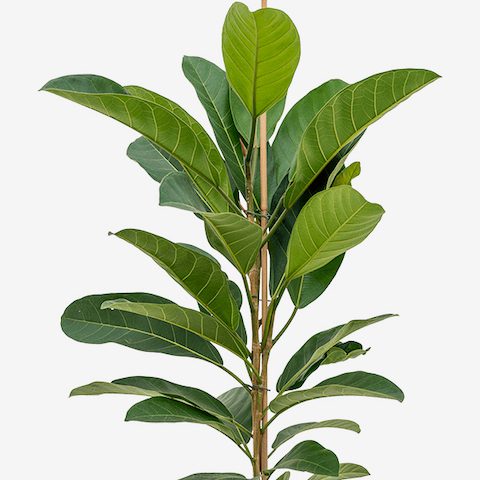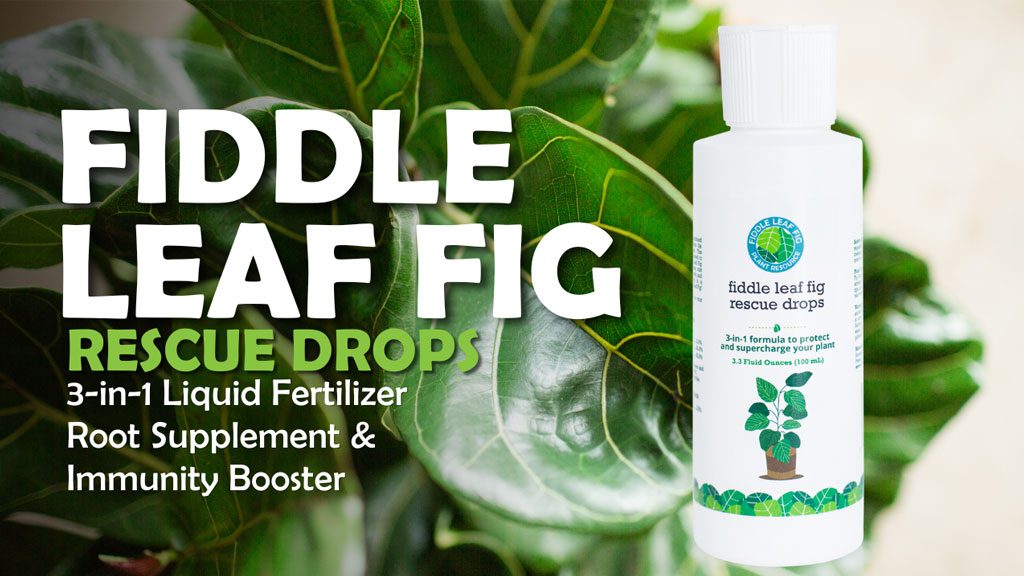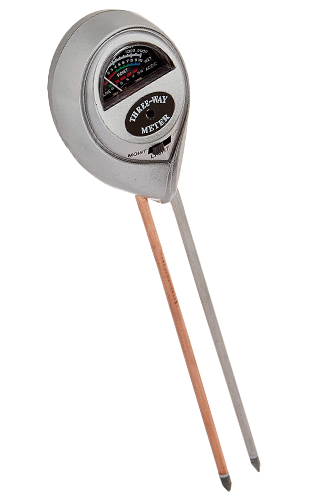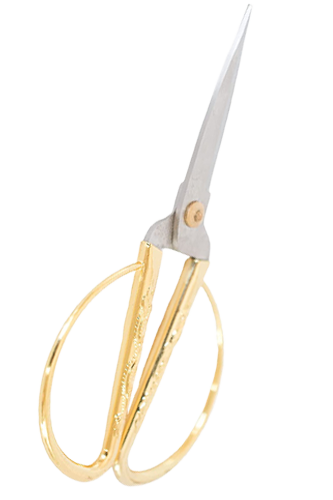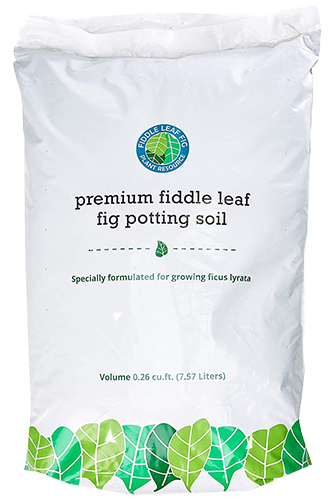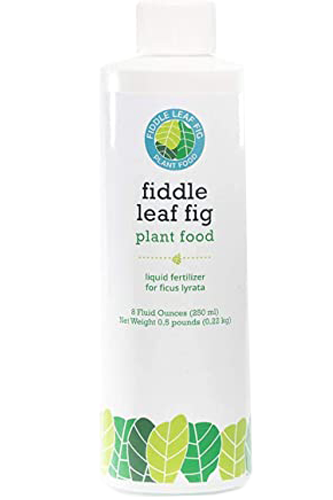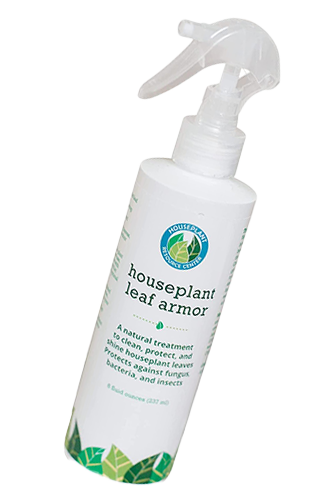Ficus benghalensis is a beautiful ficus variety similar to ficus lyrata, or fiddle leaf fig. But Ficus benghalensis care is known for being easier than fiddle leaf fig care, even if the trees themselves are a little pricier and trickier to find!
Still, these trees are lovely—sporting graceful, oblong leaves with prominent veins, a deep-green color, and a slightly fuzzy texture you won’t find on most other ficus species.
This ficus is also known as the banyan, strangler fig, or Indian banyan tree. In its native habitat of India, this tree is considered sacred and is used to pursue and achieve enlightenment.
Ficus benghalensis is also commonly known as Ficus Audrey or Audrey fig. As a potted ornamental, this tree is charming, easygoing, and a wonderful addition to your space. Though it can reach up to 100 feet tall and several acres wide outdoors, it will only reach about 10 feet inside and will remain a single trunk rather than putting down a ton of its characteristic, trunk-like aerial roots.
Here’s everything you need to know about Ficus benghalensis care.
Ficus Benghalensis Care Guide: What You Need to Know
Soil and Potting
While Ficus benghalensis is a little less picky about its watering needs than its cousin the fiddle leaf fig, it will thrive in evenly moist (but not soggy) soil.
This means soil and pot drainage is key!
Pot your Ficus benghalensis in a pot with drainage holes, and choose a size that’s about 2-3 inches larger than your plant’s root ball. This gives it a little wiggle room to grow, but not so much extra room that it holds on to a lot of excess water your plant can’t use.
Use a light, well-aerated, fast-draining soil like a quality cactus mix with some perlite mixed in, or our favorite, our Premium Fiddle Leaf Fig Potting Soil. This potting mix is ready to go right out of the bag with no soil amendments and is the perfect blend of moisture retention and drainage for all species of ficus. It’s also the ideal neutral pH for your Ficus benghalensis, and packs a powerful nutritional punch to give your ficus a boost in its new pot.
Get Fiddle Leaf Fig Soil on Amazon!
Light
As a tropical rainforest plant, Ficus benghalensis will grow and thrive with plenty of bright, indirect sunlight. This means it should get a lot of light and even a little full morning sun, but little to no direct light in the afternoon and middle of the day.
An east-facing window is the perfect spot for your Ficus benghalensis! A south- or west-facing window can also be a good choice as long as you filter the light with sheer curtains or move the tree back far enough that the sun’s rays won’t fall directly on the leaves.
If you only have a north-facing window or if you aren’t able to provide at least 8 hours per day of bright sunlight, no worries! Your Ficus benghalensis will be just as happy with a full-spectrum grow light. You can even buy these fancy full-spectrum bulbs that fit into your regular light fixtures for the perfect balance of light and function.
Water
As we mentioned earlier, Ficus benghalensis enjoys evenly moist soil, but doesn’t like wet feet.
Water your ficus when the top 2-3 inches of soil feel dry to the touch, or when a moisture meter reads 3-4.
We highly recommend using a moisture meter, by the way, because it gives a much more accurate idea of what’s going on deeper inside the pot, beyond the top layer of soil. After all, it’s possible for the top layer to be completely dry while the root ball is still soaked! (This is why it’s important to keep your soil well aerated!)
We like this moisture meter because it also measures soil pH and light levels.
When your plant is ready to be watered, give the soil a good soaking so that water drains out the bottom of the pot, and empty the drainage trays immediately. (Or put the whole pot in the sink or shower for an hour or two to drain.)
If your pot and soil drain well, this means you’ll be watering every 7-10 days or so. Keep in mind that your plant’s watering needs can change depending on the season, temperature, humidity levels, and whether it’s actively growing or not. This is why it’s important to check to make sure your plant actually needs a drink before you water it!
Fertilizer
Your Ficus benghalensis needs the right nutrients to grow a strong trunk, healthy roots, and plenty of large, deep-green leaves. A healthy ficus can use up all the nutrients in its pot in just a few months, so it’s vital to fertilize regularly with a diluted liquid fertilizer to replenish these nutrients.
We recommend Fiddle Leaf Fig Food because its 3-1-2 N-P-K ratio is perfectly balanced for all species of ficus, including Ficus benghalensis. It’s also gentle enough to use every time you water, even in the “dormant” season. This means you won’t have to remember a fertilization schedule, and your plant will get a steady supply of all the minerals it needs to grow!
If you do notice that your plant tends to stop growing during the fall or winter, you can hold off on fertilizer if you want. But indoor plants often grow in spurts year-round because, thanks to indoor climate control, they don’t really experience seasons. Observe your plant and follow its lead!
Temperature
Remember, you’re dealing with a rainforest plant here, so your Ficus benghalensis will be happiest in rainforest-like temperatures between 65-80 degrees Fahrenheit. Be careful not to let temps drop below 60 degrees, and watch out for drafts, heaters, fireplaces, and air-conditioning or heating vents that could freeze or scorch your ficus’s beautiful leaves!
Humidity
Tropical plants like humidity! To keep your Ficus benghalensis leaves healthy and supple, keep humidity levels between 50-80%. (60% is ideal, if you can make it happen!)
This might be hard to achieve if you live in the desert or use a lot of indoor climate control, but it can be done—at least directly around your plant.
Here are a few tricks for raising the humidity in your plant’s immediate environment:
- Group it with other plants so it can benefit from humidity caused by their respiration.
- Set up a humidifier near your Ficus benghalensis.
- Place it in a bright, steamy bathroom.
- Put a smaller Ficus benghalensis on a humidity tray. (You can buy one or make your own with pebbles and water in a shallow tray. Just stick your plant’s pot on top and the water will create some humidity around your plant as it evaporates!)
- Place containers of water near your plant so the evaporation will create some humidity around the leaves.
The only method we don’t recommend is misting. This will only provide a blast of humidity while you’re doing it, and it can actually cause fungal and bacterial spread. Not good!
And speaking of fungus and bacteria, the only downside to humidity is that it can provide the perfect environment for these harmful pathogens to thrive if airflow isn’t good. Make sure to keep a low fan on in the room with your Ficus benghalensis to promote air movement, and don’t let your tree’s leaves and branches get too crowded!
Repotting
Your Ficus benghalensis will most likely need to be repotted every year, so plan on going up a pot size and switching out the soil annually.
If your tree is large, you might need someone to help you!
To repot, just tip the tree on its side and pull the pot off the root ball. DO NOT pull the tree out by the trunk or you risk damaging the roots! You can use a trowel or butter knife to carefully pry out the roots if necessary.
Get as much of the old soil out of the root ball as possible by massaging it. Then add some Fiddle Leaf Fig Soil to the bottom of a clean new pot and place the tree in the pot. You might need a helper to hold on to it and make sure it’s straight! Add soil to fill in the space around the root ball, leaving a few inches at the top. Finally, give the tree a thorough watering and add a little more soil on top to compensate for any settling.
Your tree might get a little droopy for a week or two after being repotted, so make sure it gets plenty of light and leave it alone so it can adjust. It should perk up soon!
Also, avoid fertilizing for a month or so after repotting because the roots will be extra sensitive for a while.
Pruning
You may need to prune your Ficus benghalensis to shape it, clear away dead material, or control its size.
We suggest planning the cuts you intend to make and marking those areas with colored string before you make the cuts. That way, you can envision your tree’s final shape before making any irreversible changes!
When you’re ready to prune, use sharp, sterilized shears. It’s also a good idea to wear gloves and put down towels (or have a towel ready to catch the sap) because ficus sap can damage flooring and irritate your skin!
Propagation
You can propagate Ficus benghalensis through cuttings or air layering. (If you’re going to be pruning healthy material, you might as well propagate those pieces!)
To take a cutting, locate a young, healthy group of leaves with a node nearby. The node will look like a slightly thicker area of the trunk. (As long as you leave a few inches of stem on your cutting, it should include a node.) Then place your cutting upright in a clear, clean glass container of water with a little Propagation Promoter, which will protect your cutting from infection and provide a boost of natural hormones to help it take root.
Within a few weeks, you should see little white buds forming. Those are the beginnings of your new roots! In a few months, those roots should be at least an inch long and ready to plant.
If you want to try air layering, you’ll need a sharp knife or pair of shears, sphagnum moss, plastic wrap, and twist ties. Optional: Use a rooting hormone like Propagation Promoter.
Decide how big you’ll want your new ficus to be, because once the new roots are formed, you’re going to basically behead your Ficus benghalensis and plant it as a new tree!
Once you’ve decided that, locate an area between two nodes and use your knife or shears to scrape off about a square inch of bark, revealing the white layer beneath (make sure to wipe the sap away). You can dab a little Propagation Promoter (using a cotton ball) on this area to encourage root growth.
Then wet a handful or two of sphagnum moss and wring it out so it’s only damp. Wrap the moss around the area you peeled and wrap plastic wrap around the moss to hold it to the trunk. Then secure the plastic with twist ties or string. Check the bundle every day or so and moisten with a spray bottle as necessary. Within a few months, you should have some mature roots. Use your shears to snip off this section of your ficus and plant it like a new plant!
Common Ficus Benghalensis Problems and What to Do About Them
Your Ficus benghalensis can run into some problems if something about its environment or care isn’t quite right.
Here are some warning signs to watch out for:
Brown spots on the leaves: Brown spots can mean different things, but in general, dark-brown or black spots indicate that your plant is overwatered, or, more likely, that your pot or soil aren’t draining well. Check the moisture level of the soil to determine whether this might be the issue. If you notice a bad smell coming from the soil, make sure to repot into fresh soil and a clean pot, and trim away any rotting roots you notice. Use our Root Supplement for the next few waterings to help the roots heal and prevent further infection.
Dry, light-brown spots: This can mean your plant is severely underwatered. Check the soil to see if it’s dry. If your soil seems to be drying out too quickly, you might need to water more deeply.
Cracked leaves: This can indicate that humidity is too low. Make sure your tree isn’t near any vents that could be drying out the leaves, and then take steps to raise the humidity in your plant’s environment.
Yellowing leaves: This might mean your plant is a little overwatered, that it’s not getting enough sunlight, insufficient drainage, or that it has a nutrient deficiency. Use the process of elimination here to determine the cause. Check the moisture level of the soil, look at your plant’s lighting conditions, and ask yourself when you last fertilized or repotted!
Ficus Benghalensis: The Perfect Ficus to Add to Your Space!
Ficus benghalensis is gorgeous and fairly simple to care for—especially if you’ve taken care of another ficus before, like a fiddle leaf fig. Give one a try! You’ll fall in love with this delightful and laid-back tree.
If you have questions or need support for any of your ficus varieties, come join our online community by clicking below!

